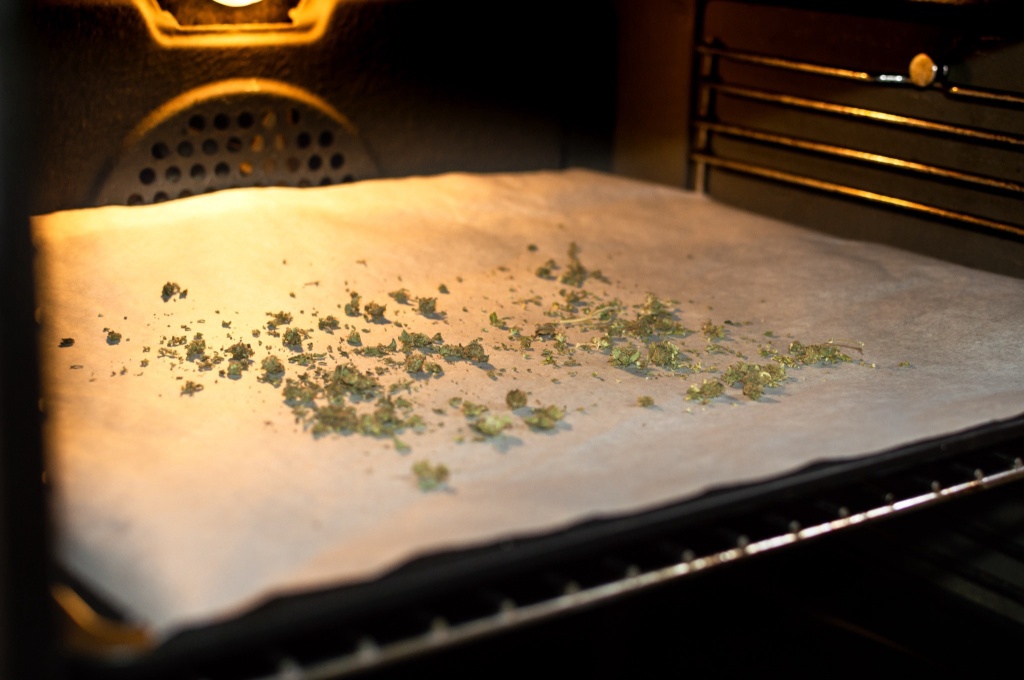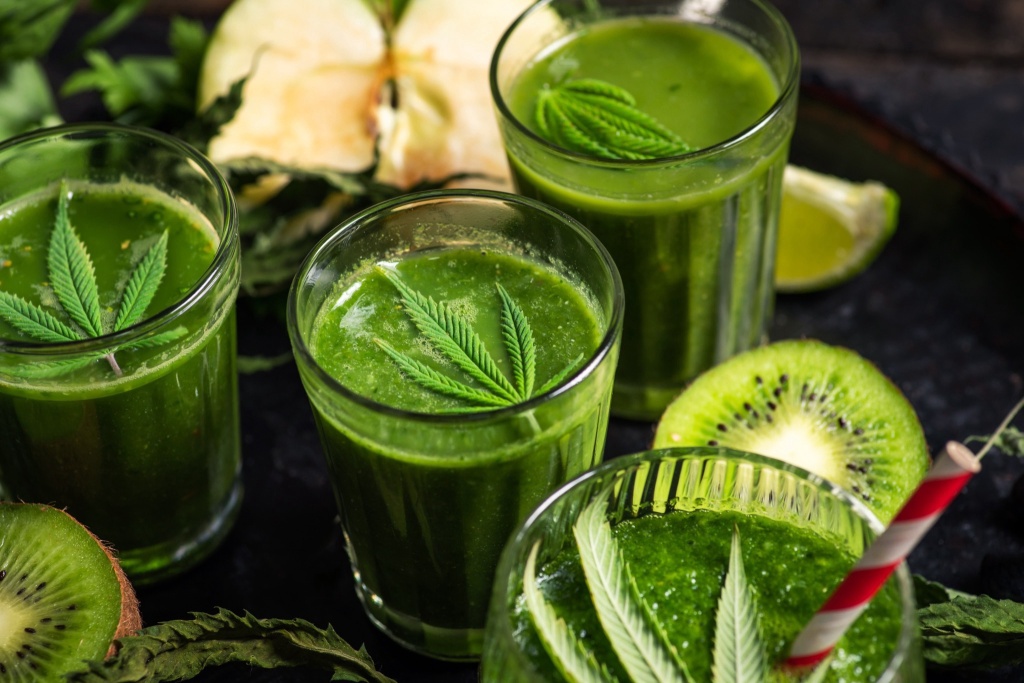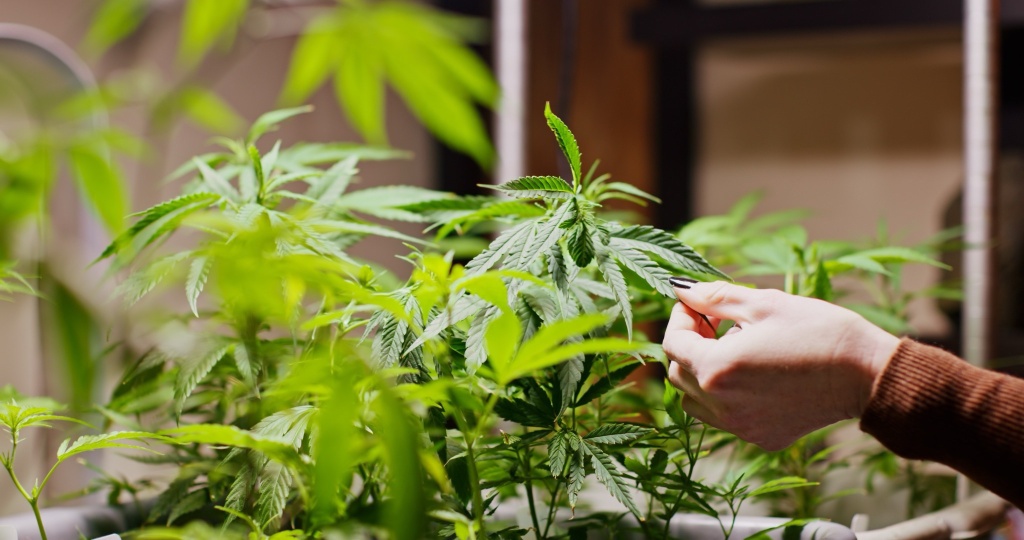Can you eat raw weed? Spoiler: it’s not what you think

Cannabis often looks quite delectable. From the watery trichomes to the soft bulbous calyxes, one might think to just take a quick nibble and reap all the benefits that marijuana has to offer. Depending on your expectations, that may not be the case. But can you eat raw weed?
RELATED: Marijuana, cannabis, hemp: what’s the difference?
While it is usually safe to eat raw cannabis in a literal sense, you will generally not get high or experience the usual psychoactive effects of the plant by ingesting raw weed. That said, a person can still safely eat it, and here’s what will happen.
No Heat, No High?
Many people consume weed for those heady, cerebral effects found in marijuana. Cannabis edibles are a highly popular form of the plant for that exact reason. Still, their psychoactive effects require a specific process for activation before the human body can experience these effects.
The reality is that you probably will not get high from eating raw weed, but some people may feel mild effects. Raw cannabis contains THCA (tetrahydrocannabinolic acid), not THC (tetrahydrocannabinol), which is the psychoactive ingredient. THCA is the non-psychoactive precursor to THC and usually will not make a person feel high.
RELATED: Can you ship weed? The answer may surprise you
To convert THCA into THC, it has to undergo decarboxylation, a chemical reaction triggered by heat (like smoking, vaping, or baking). Raw cannabis contains THCA, which has an extra carboxyl group (–COOH) attached to its molecular structure. When heated over time, this group is released as carbon dioxide (CO₂). Once this happens, THC can bind to your brain’s CB1 receptors, producing the familiar euphoric or relaxing effects of cannabis.
The science behind this has been proven by numerous studies. Without heat, your body can’t make that conversion efficiently, so users rarely feel the buzz that is associated with cannabis.

Health Benefits of Eating Raw Weed
When you don’t heat cannabis, you’re essentially consuming it as a raw plant, which means you’re getting access to cannabinoids, terpenes, and phytonutrients in their acidic, unactivated forms. These provide ample health benefits and are typically non-psychoactive.
RELATED: What does bad weed look like? How to tell if your bud is trash
Consuming raw cannabis products should still have nutritional or therapeutic potential, usually without the buzz. Some people practice juicing the leaves or buds of cannabis plants for the potential health benefits of THCA, cannabidiolic acid (CBDA), and other non-psychoactive compounds. These health-focused juicers often mix them with fruits or vegetables.

THCA may have anti-inflammatory properties, as well as neuroprotective and anti-nausea effects. Early lab studies show potential benefits for conditions like arthritis, seizures, and neurodegenerative diseases. CBDA appears to influence serotonin-related receptors, which may help alleviate nausea, anxiety, and inflammation. It is also being researched for its potential in breast cancer and epilepsy studies.
Added Flavors and Vitamin “C” in “THC”
Cannabis is still a leafy green plant with various potential benefits. Its raw leaves and buds contain numerous vitamins, including Vitamin K, Vitamin C, Iron, Calcium, and Selenium. The dietary fiber contained within the plant is beneficial for digestion. And that lush green color comes from its chlorophyll, which may support detoxification and act as an antioxidant.
Flavors stay more preserved without heat as well. Terpenes (like limonene, myrcene, and pinene) give cannabis its aroma and have potential mood, pain-relief, or anti-inflammatory properties. Flavonoids, such as cannflavins A and B, are powerful antioxidants and have been shown to inhibit inflammation. In raw form, these delicate compounds are preserved better because heat can destroy or evaporate them.
Consumption Caveats
Despite generally having mild to no psychoactive effects, there are numerous potential benefits to eating raw weed. Users may experience reduced inflammation and pain, a calmer mood, and improved sleep, or perhaps increased energy and focus (without feeling high). Research is still emerging, but it’s an area of interest for plant-based medicine and preventive wellness.
RELATED: Your weed dispensary may be illegal – here’s how to tell
A few reminders for any raw weed consumption: the raw cannabis anyone consumes must be fresh, clean, mold-free, and pesticide-free. Unfortunately, old or cured weed isn’t suitable for juicing or eating raw. This is because the drying and curing process alters the chemical composition and physical properties of the plant, making it nutritionally less optimal, potentially harsh on the digestive system, and not ideal for raw consumption.

It is important to take it slow when eating raw weed because the effects are subtle and cumulative, not immediate. Users may experience pain relief, but it is not guaranteed. Importantly, more research is needed before claiming medical benefits can be definitively established.
So, Can You Eat Raw Weed?
In the end, eating raw cannabis offers a very different experience than smoking, vaping, or consuming traditional edibles. While you usually won’t get high because the THCA in raw weed hasn’t undergone decarboxylation to become psychoactive THC, there are still plenty of reasons to explore its potential.
In its natural state, cannabis acts more like a superfood than a recreational substance. It’s rich in fiber, antioxidants, vitamins, and plant compounds that may support wellness without altering your state of mind.
RELATED: This is the biggest misconception about weed
By keeping the plant raw, you preserve sensitive terpenes, flavonoids, and cannabinoids like THCA and CBDA, the precursors to tetrahydrocannabinol (THC) and cannabidiol (CBD). Early research suggests these compounds have anti-inflammatory, anti-nausea, and neuroprotective effects. For some, raw cannabis juice or smoothies have become part of a health-conscious routine, offering potential benefits for energy, mood, and general well-being.
That said, eating raw cannabis isn’t a shortcut to getting high, nor is it a guaranteed medical remedy. The plant must be fresh, clean, and free from pesticides or mold to be safe for consumption. More importantly, further clinical studies are needed to understand its therapeutic promise fully.
So, while consuming cannabis in its raw version won’t light up your CB1 receptors or deliver that euphoric buzz, it does offer a quieter, more nutritional path to wellness. Whether viewed as a supplement, a salad ingredient, or a smoothie booster, raw cannabis reminds us that the plant’s power goes beyond psychoactivity as a complex, nutrient-dense botanical with untapped potential.
